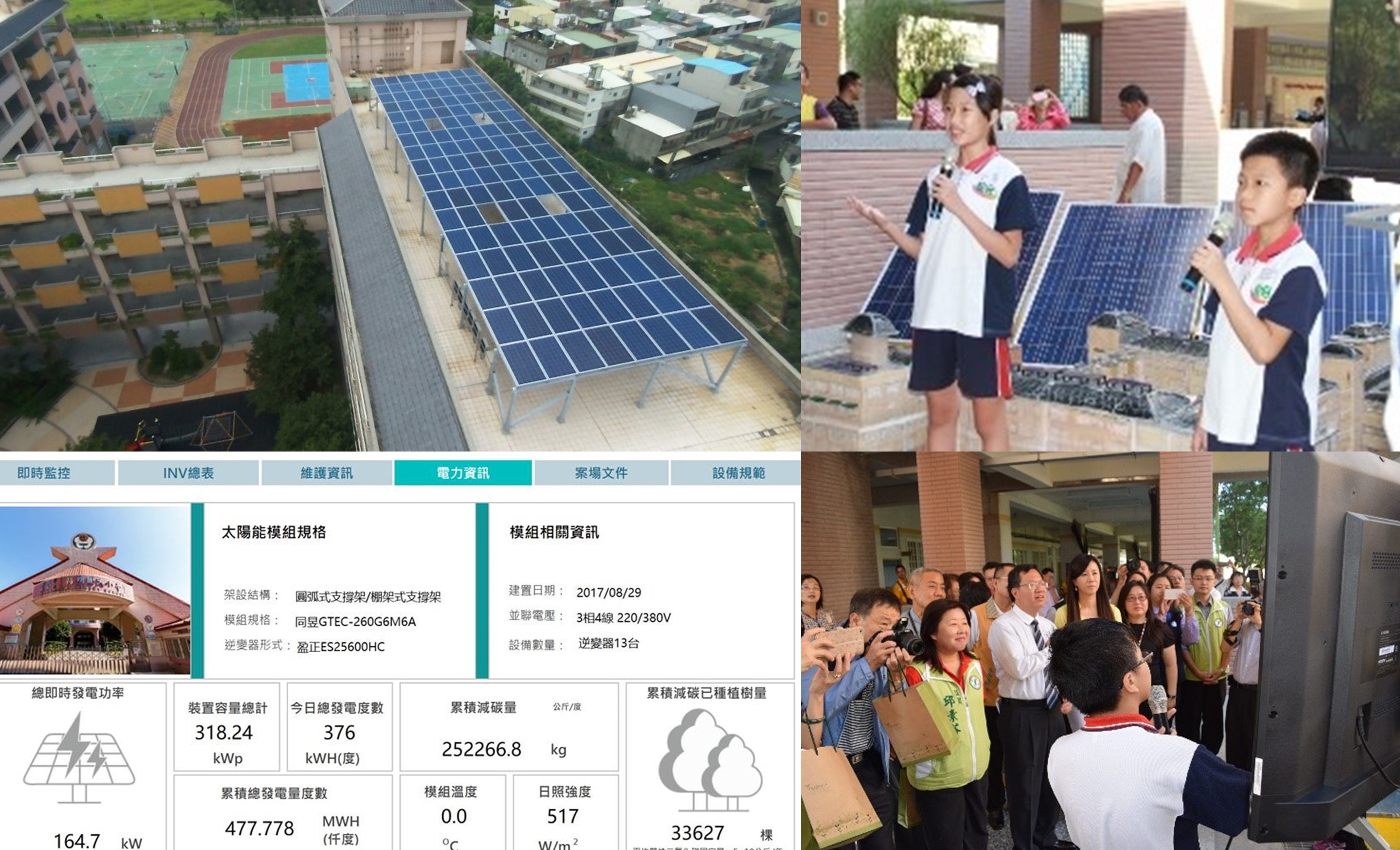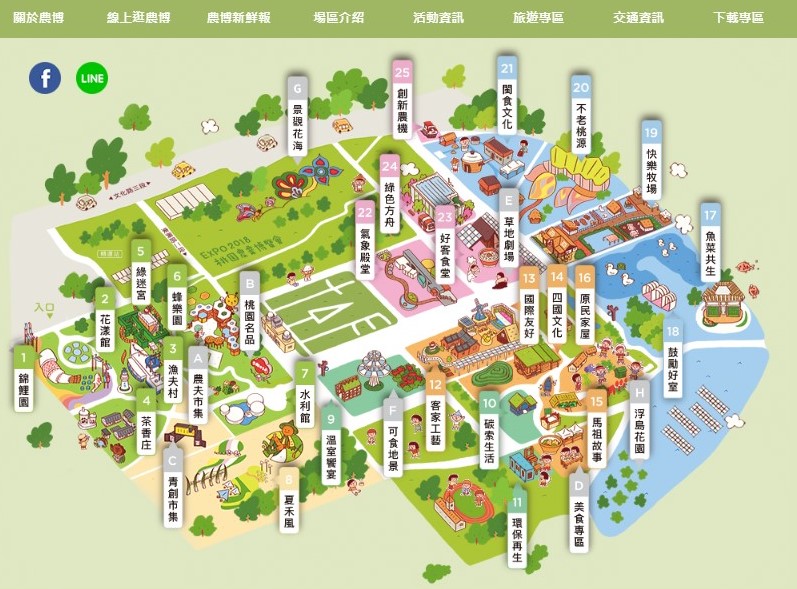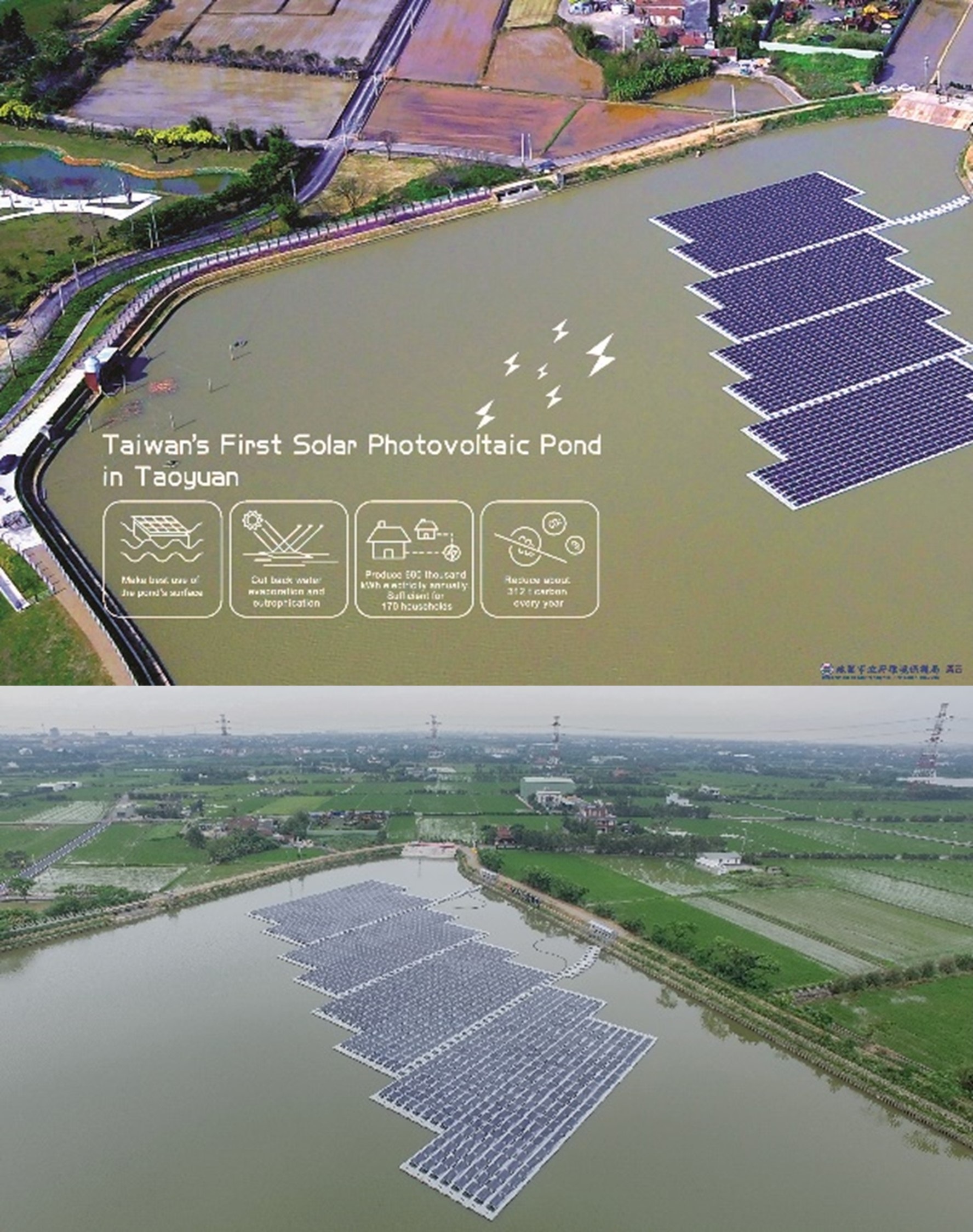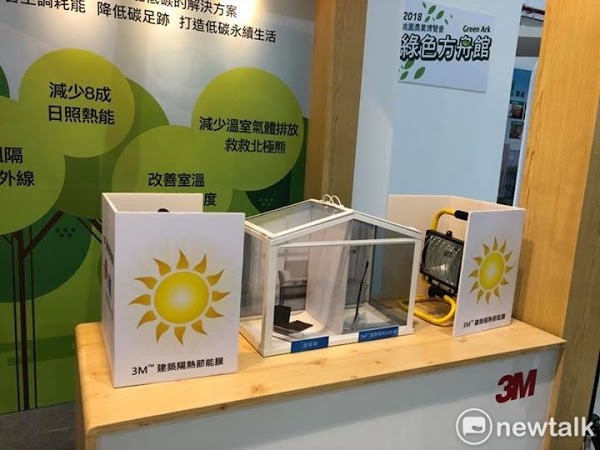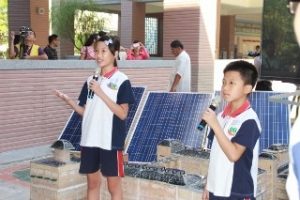
Taoyuan, a city with unique and natural environment, landscape and culture, is an important industrial and commercial site with industries from handicrafts to production and technological development. It is also a city that has well developed its industry and agriculture while continuously incorporating the idea of sustainability. In order to let its citizens to understand the practice of sustainable development, relevant education activities have been proactively promoted in the City’s relevant agencies, organizations, schools, communities, groups or individuals in order to facilitate and balance the development of sustainable environment education. With respect to renewable energy, Taoyuan has been continuously promoting the installation and establishment of renewable energy facilities upon its upgrade into a municipality in 2014. This makes Taoyuan one of the most successful cities of promoting energy transformation within the last five years. One of the promoted technologies is the solar photovoltaic system, which is widely installed in buildings of public agencies and schools. In the meantime, the City also adopts the renewable energy generation ideas and positive results derived therefrom in school curriculum.
To expand energy trainings, we have integrated current technological applications and green energy to make a demonstration in the agricultural village, Xinwu. The demonstration is presented in forms of “Taoyuan Agriculture Expo” (TAE) to let more people learn and know more about the energy, and to reach the objectives of national environmental education and life-long learning.
Figure 1. An introduction by students of Long An Elementary School, Taoyuan
Figure 2. “Taoyuan Agriculture Expo” (TAE) demonstration area
Programs for implementing training
I.Set different energy curriculums for zones of different themes.
1.Fundamental energy curriculum
(A)Introduction to renewable energy generation:
Taking TAE as the demonstrative zone, the existing use of current space has been diversified under the considerations of the country’s high population and insufficient land of use. For example, integration with the solar photovoltaic system and pond culture; wind power generation, photovoltaic paths and so on, enable visitors to start the tour immediately after entering the Park.

Table 1. The renewable energy installed capacity of Taoyuan Agriculture Expo (TAE)
Figure 3. Installed renewable energy
a.Photovoltaic ponds:
Creating a power generation environment that is ideal for fish to live. That is, using the idle water surface to develop a water solar photovoltaic generation system. The site is the first demonstrative photovoltaic pond in Chinese Taipei and its estimated annual electricity generation capacity is 600,000 kWh (totally generated 82,938 kWh during the TAE period). Not only can the benefits of ponds be increase, but it also will become the new power generation trend.
Table 2. Introduction of photovoltaic ponds
| Introductions: |
Pond is a unique characteristic landscape of Taoyuan. To promote the green energy policy and development, Taoyuan City Government has combined the solar photovoltaic systems with the pond culture; and selected ponds 12 to 14, which are located next to Beihu Elementary School in the TAE park, to install Chinese Taipei’s first photovoltaic pond. The installed capacity of furnished systems is about 481.44kWp that generate 600,000 kWh, which can fulfill the electricity demand of about 170 households each year, per year.
|
| Feature points: |
| 1.Chinese Taipei’s first photovoltaic pond incorporated with the water photovoltaic system. Not only can it facilitate the development of green energy, its annual electricity generation of 600,000 kWh can also fulfill the demand of about 170 households per year. |
| 2.Integrated with Taoyuan’s unique landscape “ponds” to show the element of this region. |
| 3.This demonstrative plan is indicative and meaningful. It is expected that other ponds will install the same facility. |
b.Photovoltaic Tree of Life:
With a height of 12m and width of 14m, this photovoltaic Tree of Life is a decorative art creation made of single-crystal high-efficiency solar energy module. The electricity produced thereby can directly supply the water pump, water maker, plant factory and irrigation system.
(B)Wind-solar photovoltaic power generation systems:
Taoyuan is ideal for developing wind generation. The City currently has 57 wind power generation turbines and is continuously developing offshore wind farms to provide more green energy. The teaching is based on a simulation game related to wind power generation. By blowing the system, it will tell you how many electricity can be generated.
2.Characteristic energy curriculum
(A)Building heat insulation
|
Image |
Description |
|
|
Effective insulation to reduce the use of air-conditioning system. The concept of building heat insulation can effectively reduce the indoor temperature and reach the objectives of saving energy and teaching citizens energy saving and carbon reduction measures other than that of renewable energy. “Chocolate man” is adopted in the teaching to simulate the sun burn effect, letting the visitors to understand the effects of heat insulation. Teaching demonstrative video: https://www.facebook.com/3M.com.tw/videos/1826390987387377/ |
(B)Water source from the air
|
Image |
Description |
|
|
Drinking water creator Tea stand is the site of demonstrating the creation of water from the air. Incorporating with the tea drinking tradition of Chinese Taipei, the clean water collected from the air are freely offered to visitors (the amount of water produced each day can be offered to more than 1,200 people).
|
(C)Smart Grid System
Integrate and arrange 10 renewable energy installation facilities, smart meters and energy storage batteries; and establish over 20 smart grids and have them integrated in the agricultural smart grid system with the 4G network for the monitoring and demonstrations.

Figure 4. Framework of agricultural smart grid system
a.System demonstration:
The information of the agricultural smart grid system was presented in 5 pictures, including:
Figure 5. Taoyuan Agriculture EXPO Smart Grid System
b.Energy storage:
The total renewable electricity generation and total power consumption of the TAE Park are displayed. When the renewable electricity generation capacity is higher than the power consumption, the supplied power ratio of renewable energy is 100%; when it is lower than 100, it implies that the park is using the electricity of Taiwan Power Company. The energy storage strategy, on the other hand, is to recharge the batteries during night time when the wind power generation takes place. The stored energy was then used for the TAE Park when the power consumption reached peak at noon.
Figure 6. Energy storage display
c.Electricity generation map:
The map shows the electricity generated from solar photovoltaic and wind power; and is presented in three class intervals: the higher level the generated electricity is the darker color it will be.
Figure 7. Electricity generation map
d.Power generation status:
The generated electricity from renewable resources is converted to “money” and “trees” to facilitate visitors’ understanding thereto.
Figure 8. Power generation status display
e.Power consumption map:
The power consumption of 16 TAE zones is herein presented in three class intervals. The more electricity consumed the darker color it will be. Where the power consumption is a negative value, it implies that the region’s generation of renewable energy is higher than its consumed electricity and that the rest electricity will be used to support other zones.
Figure 9. Power consumption map
f.Comparison of power consumption:
The power consumption is presented in the usage of four home appliances (number of days or years) to facilitate visitors’ understanding thereto.
Figure 10. Comparison of power consumption
3.Training and education effectiveness:
During the expo, it has organized over 300 events and more than 30 DIY activities. A total of 3,394,147 people were attracted to visit the venue during the forty-day expo, and the expo has helped broaden the learning of environmental education.
II.Long-term and continuous promotions
To sustainably conduct educational trainings, Taoyuan City has specially established a unit therefor, categorized the trainings for relevant implementations, continuously enhance software (teaching materials and proposals) and hardware (facilities and venue) with details as follows:
1.Provision of environmental education online leaning and teaching resources based on eight categories:
The eight categories include school and social environmental education; climate change; disaster prevention and mitigation; natural preservation; public hazard prevention and mitigation; environmental and resource management; cultural conservation; and social participation.
2.Certification of teaching venue:
Check facilities and venues belonging to agencies, schools, judicial person or registered groups and, according to the eight categories of environmental education, guide the potential ones to acquire the certification of environmental education facility from Environmental Protection Administration, Executive Yuan. The purposes are to increase the opportunities and platforms for people to exchange their ideas and learn, and to develop characteristic teaching proposals. Taoyuan City currently has 12 environmental education facilities. As the City has 13 administrative areas, it is expected to increase the number of facilities in order to reach the target of “one facility for one district”.
3.Continuous talent trainings:
To encourage citizens to become a volunteer of environmental education, Taoyuan City has done great efforts to, through environmental education trainings and curriculum, enhance people’s knowledge and skills related thereto. Not only will it enhance volunteers’ duty and service efficiency and encourage them to promote environmental protection policies and sharing experiences, but the environmental education will also be further promoted. The City currently has 206 volunteers. Volunteers who have taken relevant trainings will be appointed to companies, communities, schools or other units with necessity to promote environmental protection relevant knowledge and share their experiences. Besides, members of the environmental education volunteer team must be experienced in relevant promotions. The selection panel will review candidates’ fundamental knowledge with respect to environmental protection, interpretation skills (expression ability) and other individual quality. Those who are qualified as evaluated will be issued with a lecturer's letter of appointment by the environmental education volunteer team. The appointed lectures will be employed once every two years to ensure the environmental education quality and to build a good brand image in regard to environmental protection. Besides, there are also 1,049 people who have received environmental education certificate from the central government within Taoyuan.
Assessment Method:
1.The TAE Green Life questionnaire.
2.Curriculum training and teaching materials (teaching manual).
3.Satisfaction level investigation.
